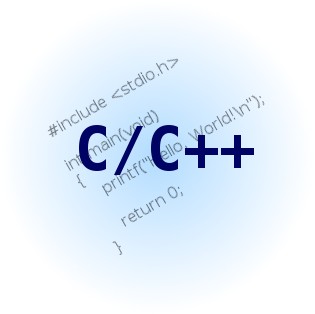
To perform 2D transformations such
as shearing and reflection on 2D object
ALGORITHM:
1.
Start
2.
Initialize the graphics mode.
3.
Construct a 2D object (use Drawpoly()) e.g. (x,y)
4.
Shearing
a.
X-shear
i.
Get the shearing value shx
ii.
x’=x + shx * y, y’=y
iii.
Plot (x’,y’)
b.
Y-shear
i.
Get the shearing value shy
ii.
x’=x , y’=y+ shy * x
c.
Plot (x’,y’)
5.
Reflection
a.
About X axis
i.
x’= x , y’ = -y
ii.
Plot (x’,y’)
b.
About Y axis
i.
x’= -x , y’=y
ii.
plot (x’,y’)
PROGRAM:
#include<stdio.h>
#include<conio.h>
#include<graphics.h>
#include<math.h>
#include<alloc.h>
#include<stdlib.h>
int n,i,p[20],q[20];
int convertx(int x);
int converty(int y);
void axis(void);
void init(void);
void shear(void);
void reflect(void);
void main()
{
int
ch,gd=DETECT,gm;
initgraph(&gd,&gm,"e:\\tc\\bgi");
axis();
printf("\b");
cleardevice();
printf("Enter the number of
vertices:");
scanf("%d",&n);
printf("Enter the co-ordinate center the
first vertex at the end");
for(i=0;i<2*n+2;i++)
scanf("%d",&p[i]);
clrscr();
init();
getch();
do
{
clrscr();
cleardevice();
printf("\n \t\t2D-Transformation
\n1.reflection\n2.shearing\n");
printf("\n\nEnter yuor choice:\n");
scanf("%d",&ch);
clrscr();
cleardevice();
switch(ch)
{
case 1:
reflect();
break;
case 2:
shear();
break;
}
}
while(ch!=3);
closegraph();
}
void axis(void)
{
cleardevice();
setlinestyle(SOLID_LINE,1,1);
line(320,0,320,getmaxy());
line(0,240,getmaxx(),240);
outtextxy(325,245,"0");
line(316,40,324,40);
outtextxy(325,41,"400");
line(316,440,324,440);
outtextxy(325,441,"-400");
line(20,236,20,244);
outtextxy(19,250,"-600");
line(620,236,620,244);
outtextxy(608,250,"600");
}
void init()
{
cleardevice();
axis();
setcolor(YELLOW);
setlinestyle(SOLID_LINE,1,1);
for(i=0;i<2*n+2;i+=2)
q[i]=convertx(p[i]);
for(i=1;i<2*n+2;i+=2)
q[i]=converty(p[i]);
drawpoly(n+1,q);
setcolor(WHITE);
}
int convertx(int x)
{
x=x/2;
return(x+=320);
}
int converty(int y)
{
y=y/2;
return(y+=240-y);
}
void shear()
{
int
sh[20],sho[20];
float
shx,shy,c;
printf("(1)share relate to
x-axis\n");
printf("(2)share
relate to y-axis\n");
printf("\n
Enter your choice:");
scanf("%f",&c);
if(c==1)
{
init();
printf("\
Enter the shear factor(shx):");
scanf("%f",&shx);
for(i=1;i<2*n+2;i+=2)
sh[i]=p[i]+(shx*(p[i+1]));
for(i=0;i<2*n+2;i+=2)
sh[i]=p[i];
}
else
{
init();
printf("\enter the shear factor(shy):");
scanf("%f",­);
for(i=1;i<2*n+2;i+=2)
sh[i]=(shy*p[i-1])+p[i];
for(i=0;i<2*n+2;i+=2)
sh[i]=p[i];
}
setlinestyle(DOTTED_LINE,1,1);
for(i=0;i<2*n+2;i+=2)
sho[i]=convertx(sh[i]);
for(i=1;i<2*n+2;i+=2)
sho[i]=converty(sh[i]);
drawpoly(n+1,sho);
getch();
}
void reflect()
{
int
i,c,rf[20],rft[20];
printf("\n
1.x-axis reflection\n 2.y-axis reflection");
printf("\n
Enter the choice:");
scanf("%d",&c);
clrscr();
cleardevice();
if(c==1)
{
for(i=1;i<2*n+2;i+=2)
rf[i]=p[i]*(-1);
for(i=0;i<2*n+2;i+=2)
rf[i]=p[i];
}
else
{
for(i=0;i<2*n+2;i+=2)
rf[i]=p[i]*(-1);
for(i=1;i<2*n+2;i+=2)
rf[i]=p[i];
}
init();
setlinestyle(DOTTED_LINE,1,1);
for(i=0;i<2*n+2;i+=2)
rft[i]=convertx(rf[i]);
for(i=1;i<2*n+2;i+=2)
rft[i]=converty(rf[i]);
drawpoly(n+1,rft);
getch();
}





 Mohanraj
Mohanraj

 Posted in:
Posted in: 





2 comments:
nic:)
Nice :)
Post a Comment